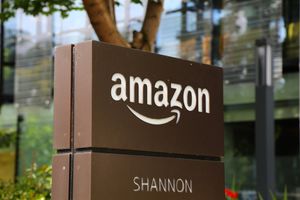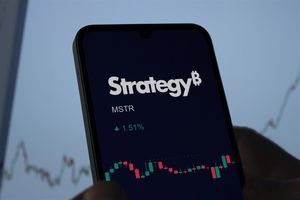According to Gartner, by 2028, more than 75% of corporate organizations will use two or more API gateways. Sensedia points out ways to manage this expanding scenario, driven by hybrid models, integrations between business units, and merger and acquisition processes.
With the acceleration of digital transformation and AI adoption, the consolidation of APIs as the innovation foundation for companies is resulting in the need for IT departments to operate in increasingly distributed, multi-cloud, and service-oriented ecosystems.
Gartner data indicates that by 2028, more than 75% of corporate organizations will use two or more API gateways due to the adoption of hybrid models, integrations between business units, and merger and acquisition processes. However, while bringing flexibility and scalability, this new dynamic also poses challenges in visibility, security, and governance.
To navigate these complexities, Sensedia recommends a multi-gateway approach that enables organizations to establish robust visibility, enforce strict security protocols, and implement effective governance models, ultimately driving improved operational efficiency and reducing risk.
Greater Control Over a Rapidly Expanding Environment
The adoption of a multi-gateway architecture emerges as a response to ensure consistency and control over a rapidly expanding environment.
While this diversity brings gains in autonomy and speed, it can also lead to the fragmentation of digital assets, duplication of APIs, increased operational complexity, and security and compliance risks if not accompanied by a solid layer of unified governance.
Kleber Bacili, CEO of Sensedia, sees the advancement of the multi-gateway reflects a structural shift in how companies approach system integration and API management.
“Multi-gateway is a natural consequence of the evolution of distributed environments. Companies are dealing with different clouds, providers, tools, and business contexts. Without centralized governance, this diversity quickly becomes an obstacle to innovation and scalability,” explains Bacili.
According to Bacili, a multi-gateway governance platform allows APIs to be synchronized automatically across different gateways, reducing rework and maintaining consistent security and compliance policies across the organization. This approach also enhances independence and flexibility for development while increasing API security and governance, regardless of where they are published, without compromising team agility and performance, and improving visibility and observability of APIs and integrations.
Building a Governance Foundation for AI-Driven APIs
As APIs proliferate across services, teams and environments, it becomes essential to maintain a clear, up-to-date catalogue of what it is published, who owns it, how it is used and where it sits. A strong API catalogue paired with consistent governance — covering lifecycle, security, reuse and retirement — lays the groundwork for any AI or automation strategy.
With that foundation in place, organizations can turn to automation and intelligence to monitor their API footprint, flag unused or duplicate endpoints, and proactively manage risk. That means fewer surprises, lower cost of operation, and alignment of API resources with strategic business objectives.
The key is: before optimizing for machine-speed oversight or smart routing of AI workloads, first ensure you know what your APIs are, where they are and how they are governed. That is the key that enables innovation safely.
Agile Integration and Compliance in Regulated Environments
When companies merge, acquire, or expand across geographies, they often inherit fragmented API estates each with its own policies, gateways and security regimes. A multi-gateway architecture allows rapid integration of these distinct API inventories without rebuilding or re-inventing every policy and configuration.
In heavily regulated sectors like open finance and healthcare, this architecture also supports continuous compliance: it is possible to automate audit workflows for APIs serving critical functions, enforce policy changes across domains in real time, and isolate more sensitive workloads with dedicated gateways. The result is faster time-to-value on integration, tighter control over risk and regulatory exposure, and an operational platform that keeps pace with the business rather than holding it back.
“Unified governance makes a multi-gateway environment intelligent. With a consolidated view of all APIs and their dependencies, technology teams gain control, and business areas regain speed. It is a paradigm shift: the multi-gateway becomes a strategic layer, not just an operational one,” adds Bacili.
Increased Operational Efficiency
The model also has a direct impact on the productivity of developers and DevOps teams, who benefit from enhanced observability, simplified management of API lifecycles, and facilitated component reuse. This accelerates the onboarding of new partners, reduces the time-to-market for digital products, and strengthens competitive agility—a critical factor in a scenario where response speed has become a market differentiator.
Recent Forrester studies reinforce this view: companies with robust API governance mechanisms achieve 35% more operational efficiency and reduce the integration time for new services by up to 40%. “These numbers show that governance, when applied strategically, is an engine for innovation and not a barrier,” highlights Bacili.
Sensedia has been driving this debate and supporting large companies in modernizing legacy architectures and migrating to multi-cloud and multi-gateway models across various sectors, helping organizations balance agility and security in their integration ecosystems.
“Architectures are increasingly becoming hybrid, multi-cloud, and multi-vendor, and this can exponentially increase the complexity of integration Governance if special care is not taken with APIs. Companies that adopt intelligent and unified governance will be ready to scale innovation sustainably. It’s not a technical option, but a long-term strategic decision,” concludes Bacili.
About Sensedia
Sensedia, a global leader in API management, integration, and microservices, empowers businesses to accelerate digital innovation. Our solutions enable agile, modern, and scalable architectures that unlock data, enhance digital experiences, expand business models, and connect complex ecosystems. Learn more at sensedia.com.
View source version on businesswire.com: https://www.businesswire.com/news/home/20251112595826/en/
By 2028, more than 75% of corporate organizations will use two or more API gateways due to the adoption of hybrid models, integrations between business units, and merger and acquisition processes.
Contacts
Media Contact
Jackeline Correia
Sensedia
pr.sensedia@sensedia.com
+55 13 98815-4415






